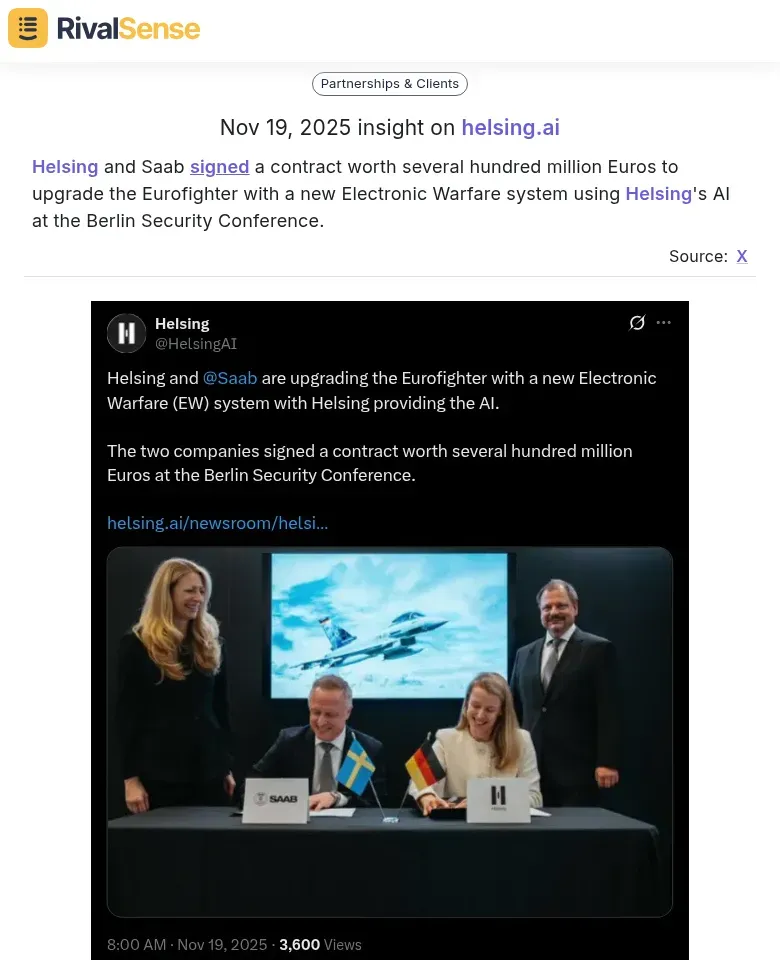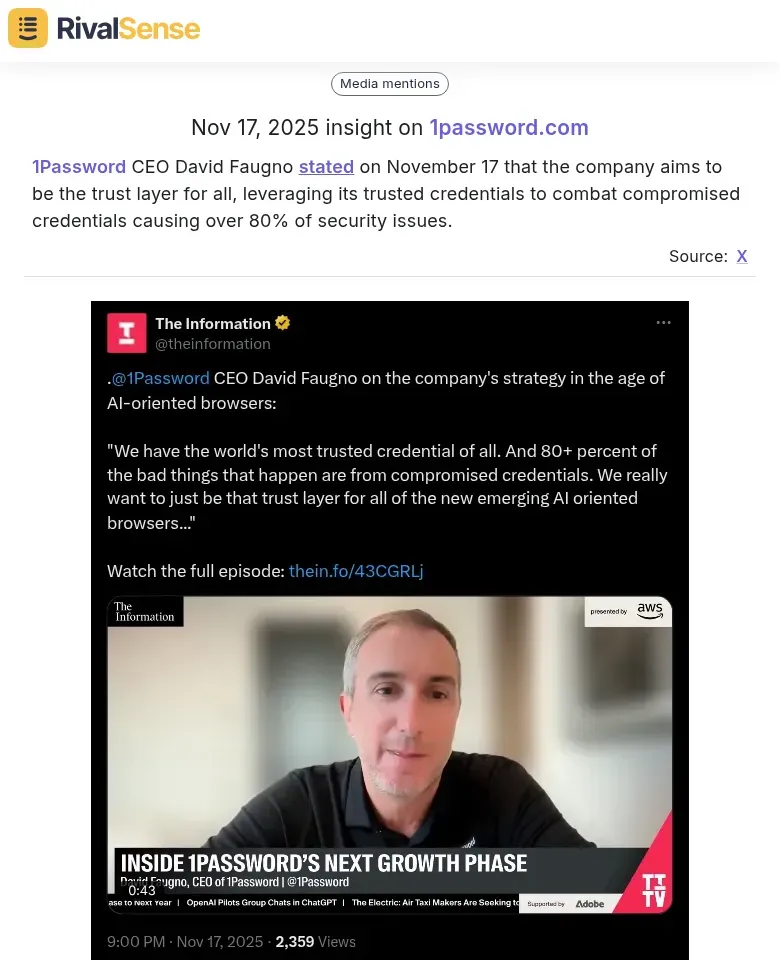Beginner's Guide: Track Competitor Insights from Twitter
Tracking competitors on Twitter provides real-time intelligence that traditional market research misses, giving you an edge in a fast-paced business environment. You can spot product launches, pricing changes, customer complaints, and marketing campaigns as they happen, allowing for swift strategic adjustments. This immediate insight helps you adapt your strategy quickly and identify opportunities your competitors might be overlooking.
Start by identifying key competitor accounts to monitor. Look beyond direct competitors to include complementary businesses and industry influencers who shape market trends. Create a master list with verified handles, and categorize them by relevance—such as primary, secondary, and tertiary—to prioritize your monitoring efforts.
🛠️ Practical Steps for Basic Monitoring
- Use Twitter's native features: Create private lists for each competitor category and enable notifications for critical accounts.
- Set up Google Alerts for competitor mentions that don't use direct @tags to catch indirect references.
- Leverage free tools like TweetDeck to monitor multiple streams simultaneously for efficiency.
- Develop a simple tracking spreadsheet with columns for date, competitor, key activity, and strategic implications.
- Check these sources daily for the first two weeks to establish baselines, then transition to weekly reviews once patterns emerge.
Analyzing Strategic Partnerships and Collaborations
Strategic partnerships on Twitter reveal competitors' expansion tactics and market positioning, offering clues about their future moves. Monitoring announcements of new collaborations can signal market entry, audience targeting, or innovation pushes that might affect your industry. For example, a SaaS firm partnering with an e-commerce platform may indicate a strategic shift into retail, prompting you to reassess your own offerings.
Engagement metrics on partnership posts—such as likes, shares, and comments—show audience resonance and can highlight successful alliances. High engagement often means the collaboration strengthens brand positioning, while low engagement may suggest misalignment. Use tools like RivalSense to log these patterns systematically. For instance, RivalSense tracked that Helsing and Saab signed a contract worth several hundred million Euros to upgrade the Eurofighter with a new Electronic Warfare system using Helsing's AI at the Berlin Security Conference.  This type of insight is valuable because it uncovers high-stakes partnerships that can redefine market dynamics, helping you anticipate competitive threats or explore similar collaborations.
This type of insight is valuable because it uncovers high-stakes partnerships that can redefine market dynamics, helping you anticipate competitive threats or explore similar collaborations.
✅ Checklist for Partnership Analysis
- Note partnership types: Document whether it's co-marketing, tech integrations, or joint ventures.
- Analyze follower growth: Track spikes in followers post-announcement to gauge market interest.
- Identify recurring partners: Spot trends by noting if competitors repeatedly collaborate with the same entities.
💡 Tips for Action
- Look for gaps in competitor partnerships; if they're active in a niche you've overlooked, consider co-creation opportunities.
- Counter their moves by forging alliances in underserved areas or emphasizing your unique value propositions.
- Practical step: Maintain a spreadsheet to track partnership announcements, partners involved, and engagement metrics weekly for proactive strategy updates.
Tracking Announcements and Industry Recognition
Tracking competitor announcements and industry recognition on Twitter provides crucial growth indicators that can inform your strategic planning. Monitor hiring announcements to gauge expansion plans—frequent senior hires often signal strategic shifts into new markets or technologies. Award wins and industry accolades boost credibility, so tracking these helps you benchmark against your own milestones and identify areas for improvement.
Analyze audience reactions to these announcements for deeper insights. Positive sentiment around funding announcements may indicate market confidence, while negative feedback on product launches reveals improvement opportunities. Notice which types of announcements—such as thought leadership posts or customer success stories—garner the most retweets and comments, as this highlights what your target audience values most.
🛠️ Practical Steps for Monitoring
- Set up Twitter lists for key competitors and industry influencers to streamline monitoring.
- Use advanced search operators like "from:[competitor] hiring" or "award" to filter relevant tweets.
- Track engagement metrics on announcements; high interaction signals market validation and audience interest.
- Create a spreadsheet to log competitor achievements alongside your own timeline for comparative analysis.
For example, RivalSense captured that 1Password CEO David Faugno stated on November 17 that the company aims to be the trust layer for all, leveraging its trusted credentials to combat compromised credentials causing over 80% of security issues.  This type of insight is valuable because it reveals strategic directions and thought leadership that can influence market perceptions, enabling you to align or differentiate your messaging accordingly.
This type of insight is valuable because it reveals strategic directions and thought leadership that can influence market perceptions, enabling you to align or differentiate your messaging accordingly.
💡 Tip for Efficiency
- Use social listening tools to automate tracking and set alerts for competitor mentions of keywords like "hiring," "award," "partnership," or "funding." Compare the timing of competitor recognition with your growth stages to identify strategic gaps and capitalize on opportunities.
Monitoring Event Participation and Industry Presence
Monitoring competitor event participation on Twitter reveals their strategic priorities and investment in industry visibility. Track which conferences they attend, the speaking roles they secure, and the themes they emphasize to understand their market focus. For instance, if a rival consistently presents on AI integration, it signals a commitment to that technology, prompting you to evaluate your own positioning.
Note attendee engagement levels during their sessions and gather feedback from social media discussions to identify strengths and weaknesses in their solutions. This intelligence helps you counter their advantages and exploit any vulnerabilities. Practical steps include creating a spreadsheet of competitor events, documenting session topics and audience reactions, and analyzing patterns quarterly to inform your strategy.
For example, RivalSense tracked that Erykah Badu performed for a special Spotify Anniversary event on November 18.  This type of insight is valuable because it highlights how competitors use high-profile events to boost brand visibility and engage audiences, allowing you to assess the impact on their market presence and plan your own event strategies accordingly.
This type of insight is valuable because it highlights how competitors use high-profile events to boost brand visibility and engage audiences, allowing you to assess the impact on their market presence and plan your own event strategies accordingly.
✅ Actionable Steps
- Adjust your event strategy: If competitors dominate technical conferences, consider targeting business-focused events to differentiate your brand.
- Refine messaging and booth presence: Use insights from competitor feedback to address unmet customer needs in your own presentations.
- Track engagement metrics: Monitor likes, shares, and comments on event-related posts to measure resonance and adjust tactics.
Predicting Competitor Moves and Market Trends
Twitter activity often reveals strategic shifts before they become public, giving you a predictive edge in competitive analysis. Track tweet frequency spikes—sudden increases can precede major announcements like product launches or rebranding efforts. Monitor hashtag adoption patterns; when competitors consistently use new hashtags, they're likely testing messaging for upcoming campaigns, such as a focus on sustainability or AI.
Analyze engagement patterns to spot market opportunities and vulnerabilities. High engagement on specific topics indicates strong customer interest, while low engagement on competitor announcements may reveal market skepticism, presenting a chance to position your offerings differently. Track which types of tweets—product demos, thought leadership, or customer stories—drive the most interactions to refine your content strategy.
🛠️ Proactive Response Framework
- Weekly review: Monitor competitor tweet volume trends to detect anomalies.
- Monthly hashtag analysis: Identify emerging themes that could signal new initiatives.
- Engagement rate tracking: Use this to spot weaknesses in competitor campaigns.
- Pre-drafted response templates: Prepare for common competitor moves like price changes or feature releases.
- Cross-reference insights: Validate Twitter findings with data from other channels for accuracy.
💡 Practical Tip
Set up Twitter lists for each major competitor and use social listening tools to automate tracking. When patterns emerge, document them in a competitive intelligence dashboard for quick reference during strategy sessions, ensuring your team can act swiftly on new information.
Implementing Insights into Your Business Strategy
Transforming Twitter competitor insights into actionable strategy requires systematic integration into your business operations. When rivals launch successful campaigns, adapt similar themes with your unique angle to stay relevant—for example, if competitors gain traction with video tutorials, schedule your own educational series to engage your audience. Set up regular monitoring processes to ensure insights are consistently applied across teams.
Involve key departments like marketing, sales, and product in weekly reviews to discuss findings and identify gaps in competitor strategies that you can exploit. Measure the impact of these adjustments by tracking metrics such as website traffic from social campaigns, lead generation rates, and share of voice relative to competitors. This data-driven approach ensures that competitor intelligence translates into tangible business growth.
✅ Implementation Checklist
- Weekly audit: Review competitor posts and document key takeaways.
- Update content plans: Adjust your calendar based on insights to address market trends.
- Review performance data: Analyze metrics monthly to assess the effectiveness of strategy changes.
- Focus on patterns: Look for consistent themes in competitor activity rather than isolated posts to identify long-term trends.
🚀 Take Action with RivalSense
Ready to streamline your competitor tracking and gain deeper insights? Try RivalSense for free at https://rivalsense.co/ and get your first competitor report today! Our tool tracks product launches, pricing updates, event participations, and more, delivering weekly reports to keep you ahead of the competition.
📚 Read more
👉 How to Monitor Competitor Partnerships in Mobility Services
👉 Beginner's Guide: Track Competitor Hiring & Layoffs for Key Account Wins
👉 Leveraging Competitor Management Changes for Strategic Advantage
👉 The Ultimate Guide to Key Account Tracking in Salesforce
👉 Essential Competitor Analysis Strategies for Investment & Wealth Management
